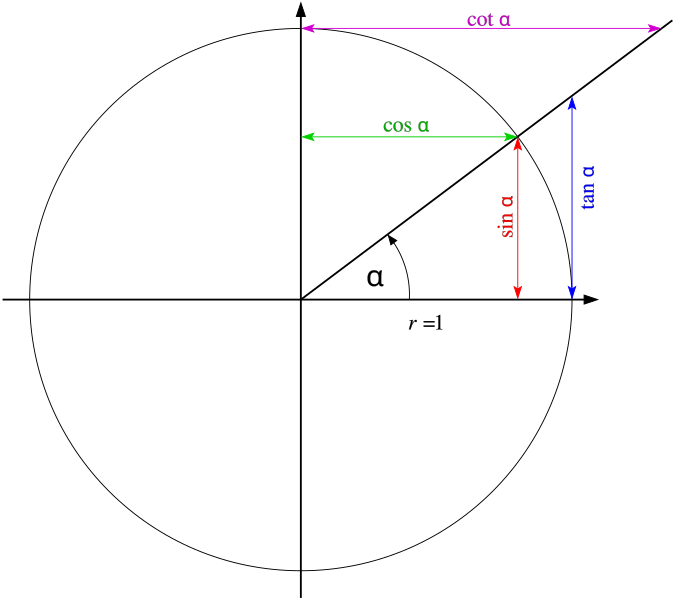Why is cosine used to calculate the x values and sine the y values for an arc?
-
28-09-2019 - |
Question
I'm trying to understand the math on this raphael.js demo:
Checkout the sector method:
function sector(cx, cy, r, startAngle, endAngle, params) {
var x1 = cx + r * Math.cos(-startAngle * rad),
x2 = cx + r * Math.cos(-endAngle * rad),
y1 = cy + r * Math.sin(-startAngle * rad),
y2 = cy + r * Math.sin(-endAngle * rad);
return paper.path(["M", cx, cy, "L", x1, y1, "A", r, r, 0, +(endAngle - startAngle > 180), 0, x2, y2, "z"]).attr(params);
}
This is the actual demo: http://raphaeljs.com/pie.html
My math is a little rusty and I'm trying to understand the sector function - given the startAngle and endAngle parameters (each start and end point values between 0 and 360 drawing an arc), why does this function work?
Solution
It all depends on how you treat startAngle and endAngle. It looks like this is treating them as starting from horizontal to the right (i.e. an angle of 0 is pointing East) and going clockingwise (so an angle of 45 degrees is pointing South-East.
Usually in mathematics we consider angles starting from the horizontal to the right, but increasing anti-clockwise... but if you ask a non-mathematician to draw an angle, they may well treat it from vertically up (i.e. North) increasing clockwise. This looks like it's taking a mixture :) There's no really "wrong" or "right" answer here - it's all a matter of definition.
As pictures are popular, here are the three systems I've described, each assuming the line is of length r:
Normal mathematics: anti-clockwise from x-axis

(source: arachsys.com)
Asking the man on the street to draw an angle (clockwise from y-axis)
The angles used by this code (clockwise from x-axis)
OTHER TIPS
Just look at what sin and cos actually mean in a circle:

If you have a point on a circle which forms an angle alpha, the cos alpha is the x-part of the point a sin alpha is the y part.
This illustration explains, why the angle is negated.

It means, that you can now specify clockwise angles, which most people with analogue clocks prefer.
Because arbitrary point on circumference with center (cx, cy) and radius R has the following coordinate (it directly follows from cos and sin geometric definitions - ratio between lengths of corresponding cathetus and hypotenuse):
x = cx + R*cos(a)
y = cy + R*sin(a) for 0 <= a < 2π
So setting limits on angle a you can define arbitrary arc.
If you take 0° as horizontal with x increasing and 90° as vertical with y increasing then as:
cos(0) = 1
sin(0) = 0
cos(90) = 0
sin(90) = 1
you can vary the x value by multiplying it by the cosine and vary the y value by multiplying it by the sine.

